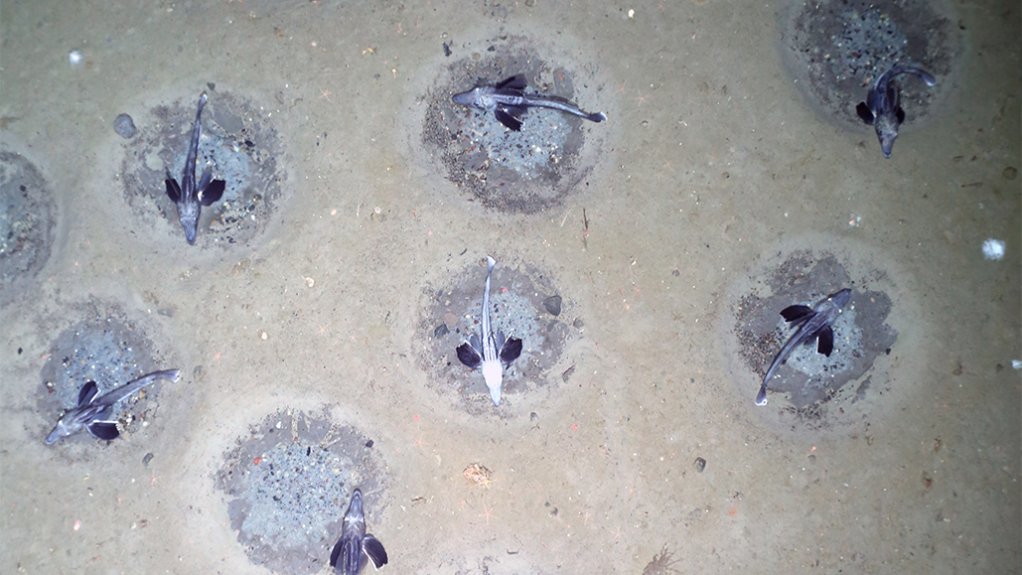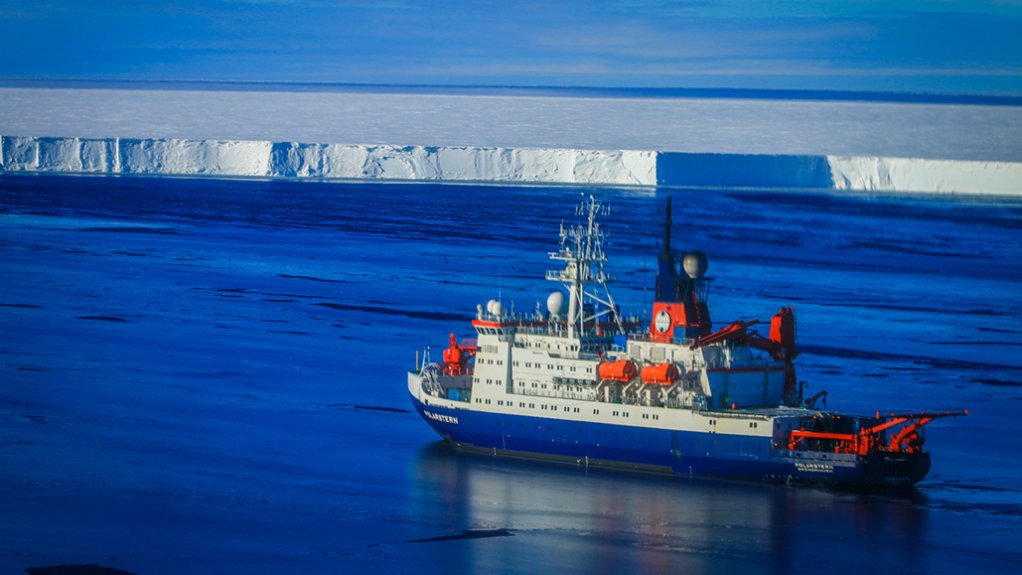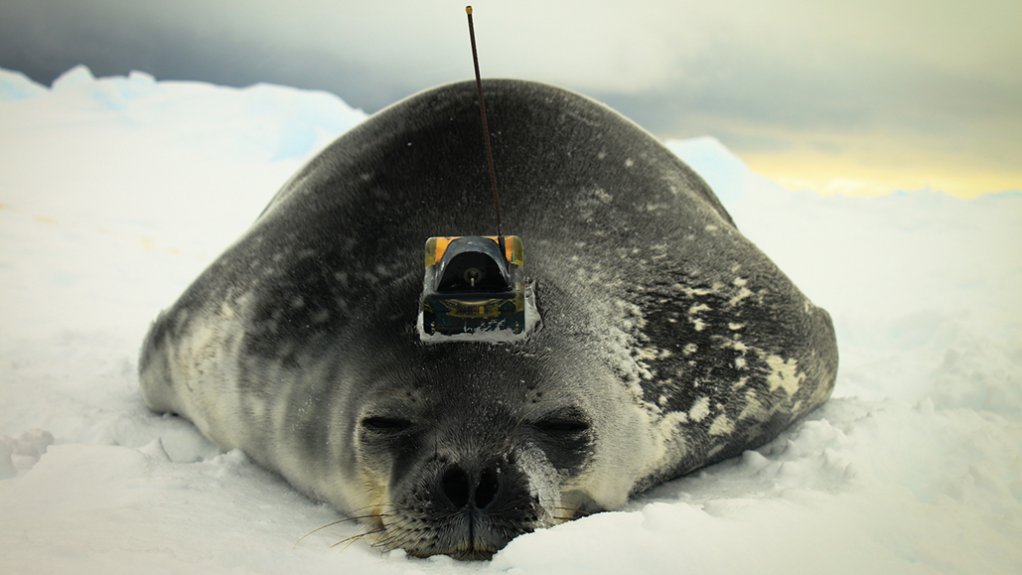South African scientist helps discover world’s largest fish breeding colony




A breeding colony of notothenioid icefish
German research vessel RV Polarstern in Antarctica
The icefish are a source of food for Weddell seals
University of Pretoria Faculty of Natural and Agricultural Sciences lecturer in the Department of Zoology and Entomology Dr Mia Wege was part of an international collaborative research team that discovered one of the world’s largest fish breeding colonies in the southern Weddell Sea, Antarctica, in February 2021.
The findings were published in the peer-reviewed Current Biology journal on January 13.
The discovery was made by scientists from the Alfred Wegener Institute (AWI) Helmholtz Centre for Polar and Marine Research, in Germany.
In a statement on January 25, Wege said the researchers were aboard German research vessel RV Polarstern, which was breaking through sea ice in the Weddell Sea to study marine life.
The breeding colony of notothenioid icefish – or neopagetopsis ionah – that was discovered by the research team is the highest density of fish nests ever encountered globally.
Wege said the breeding colony, which stretches about 240 km2 was an exciting and important find.
“People tend to think of Antarctica as this desolate place with no life. But this clearly shows us that the waters surrounding Antarctica are full of life,” she commented.
The Ocean Floor Observation and Bathymetry System, a state-of-the-art towed camera system, was used to make the discovery.
Using towing video cameras and other instruments 500 m under water, the ship came upon thousands of 75-cm-wide nests near the seafloor – each occupied by a single adult icefish, as well as scores of fish eggs.
The flow of the currents and the presence of some underwater troughs in this area of the Weddell Sea means that pockets of slightly warmer waters of between -1 °C and 0 °C flow up onto the continental shelf, Wege explained.
This creates the perfect breeding spot for the icefish, while their carcasses contribute nutrients to the system and are most likely a source of food for Weddell seals.
“In fact, historic and newly collected Weddell satellite tracking data found that seals are spending up to 90% of their time over the fish nests area. . . This alone is a unique finding.
“We use satellite tracking devices to tell us where animals are swimming and eating and combine [this information] with other cues about the ocean to tell us that this must be a productive area with lots of fish and nutrients,” Wege explained, adding that scientists rarely get the chance to study all levels of the food chain at once.
She noted that the find amounted to valuable information, not only because of the new fish nests discovery but also because it has led to a much better understanding of the ecosystem in one of the most remote and least-studied parts of the ocean.
AWI lead scientist and deep-sea biologist Dr Autun Purser headed the team, which included scientists from various institutions, including the University of Bremen, the University of Basel, HafenCity University Hamburg and the Max Planck Institute for Marine Microbiology.
Two seafloor cameras are currently at the colony site and will remain there for a couple of years, taking photographs four times a day to determine whether this is a one-time occurrence or a long-term nesting spot.
Wege said the discovery added an enormous amount of support to the establishment of a vital marine-protected area in the Weddell Sea under the Convention on the Conservation of Antarctic Marine Living Resources umbrella – a proposal that has been blocked by several member nations of the Antarctic Treaty for the past few years.
Article Enquiry
Email Article
Save Article
Feedback
To advertise email advertising@creamermedia.co.za or click here
Comments
Press Office
Announcements
What's On
Subscribe to improve your user experience...
Option 1 (equivalent of R125 a month):
Receive a weekly copy of Creamer Media's Engineering News & Mining Weekly magazine
(print copy for those in South Africa and e-magazine for those outside of South Africa)
Receive daily email newsletters
Access to full search results
Access archive of magazine back copies
Access to Projects in Progress
Access to ONE Research Report of your choice in PDF format
Option 2 (equivalent of R375 a month):
All benefits from Option 1
PLUS
Access to Creamer Media's Research Channel Africa for ALL Research Reports, in PDF format, on various industrial and mining sectors
including Electricity; Water; Energy Transition; Hydrogen; Roads, Rail and Ports; Coal; Gold; Platinum; Battery Metals; etc.
Already a subscriber?
Forgotten your password?
Receive weekly copy of Creamer Media's Engineering News & Mining Weekly magazine (print copy for those in South Africa and e-magazine for those outside of South Africa)
➕
Recieve daily email newsletters
➕
Access to full search results
➕
Access archive of magazine back copies
➕
Access to Projects in Progress
➕
Access to ONE Research Report of your choice in PDF format
RESEARCH CHANNEL AFRICA
R4500 (equivalent of R375 a month)
SUBSCRIBEAll benefits from Option 1
➕
Access to Creamer Media's Research Channel Africa for ALL Research Reports on various industrial and mining sectors, in PDF format, including on:
Electricity
➕
Water
➕
Energy Transition
➕
Hydrogen
➕
Roads, Rail and Ports
➕
Coal
➕
Gold
➕
Platinum
➕
Battery Metals
➕
etc.
Receive all benefits from Option 1 or Option 2 delivered to numerous people at your company
➕
Multiple User names and Passwords for simultaneous log-ins
➕
Intranet integration access to all in your organisation



















